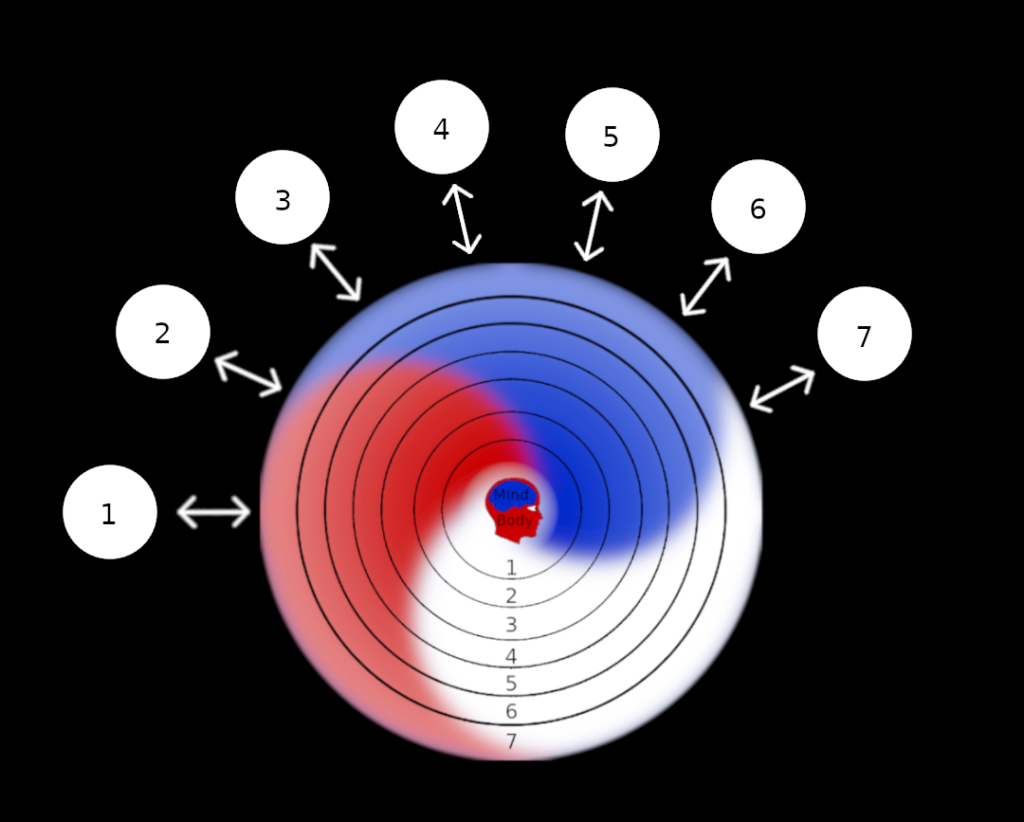Application of domains of study is vital for the systems engineer to make informed decisions

The application of different domains of study throughout systems engineering is vital for several reasons, all of which contribute to ensuring that systems engineers are well-informed and equipped to do their jobs effectively:
Comprehensive Understanding: Each domain of study provides unique perspectives and insights into different aspects of the system and its context. By applying multiple domains, systems engineers gain a comprehensive understanding of the system’s requirements, constraints, and implications across various dimensions.
Holistic Approach: Systems engineering involves addressing complex interactions and interdependencies between different system components, stakeholders, and environments. By considering multiple domains, systems engineers take a holistic approach that encompasses technical, human, organizational, and environmental factors, ensuring that all aspects are appropriately addressed.
Risk Management: Different domains of study help identify and mitigate various types of risks associated with system design, development, and operation. By considering factors such as human factors, safety, reliability, and security, systems engineers can proactively identify potential risks and develop strategies to mitigate them, thereby reducing the likelihood of adverse outcomes.
Optimization of Design Decisions: Each domain of study provides criteria and considerations that can inform design decisions. By integrating insights from multiple domains, systems engineers can make informed trade-offs and decisions that optimize system performance, usability, safety, and other critical attributes, leading to better overall outcomes.
User-Centered Design: Many systems are ultimately intended to be used by humans, whether directly or indirectly. By incorporating domains such as human factors engineering, ergonomics, and user experience design, systems engineers can ensure that systems are designed with the needs, capabilities, and preferences of users in mind, leading to more intuitive, user-friendly, and effective solutions.
Adaptability and Resilience: Systems often operate in dynamic and uncertain environments, where conditions and requirements may change over time. By considering multiple domains, systems engineers can design systems that are adaptable, resilient, and able to accommodate future changes and challenges, ensuring long-term viability and sustainability.
In summary, the application of different domains of study throughout systems engineering enhances the capabilities of systems engineers by providing them with a more comprehensive understanding of the systems they are designing, enabling them to make better-informed decisions, manage risks effectively, and develop solutions that meet the needs of users and stakeholders in diverse and evolving contexts.
XSE's 7 Domains of Study

The 7 Domains of study used in XSE are depicted above as “satellites” orbiting the 7 Spheres of integration (in which you would plot your SOI and SOC). XSE’s 7 domains of study are represented as satellites due to the fact that they “shed light” on the factors that can or already do influence the SOI and SOC during each stage of the systems engineering process. The 7 domains of study that XSE applies are namely:
- Law
- Psychology (Psych)
- Biology & applicable sciences (BioAS)
- Human Factors Engineering (HFE)
- Environmental & Occupational Safety & Health (EOSH)
- Training, Manpower, & Personnel (TMP)
- Survivability & Habitability (S&H)

Many Systems Engineers apply the domains of study from Human Systems Integration (HSI)

Many systems engineers find it crucial to incorporate the domains of study within Human Systems Integration (HSI) because it ensures that the design, development, and operation of complex systems consider the human element comprehensively. Each domain addresses specific aspects of human performance, well-being, and safety within the context of system design and operation. Here’s why these domains are essential:
Human Factors Engineering: Focuses on optimizing the interaction between humans and systems by considering human capabilities, limitations, and preferences. By applying principles of human factors engineering, systems engineers can design interfaces, controls, and displays that are intuitive, user-friendly, and conducive to efficient and safe operation.
Training: Ensures that users have the knowledge, skills, and abilities to operate and maintain systems effectively. Proper training programs developed through the training domain help users understand system functions, procedures, and safety protocols, reducing errors and enhancing overall system performance.
Manpower and Personnel: Addresses the organization and management of human resources within a system. By considering workforce planning, staffing requirements, job roles, and team dynamics, systems engineers can ensure that the right personnel with appropriate qualifications are available to support system operations and maintenance.
Occupational Safety & Health: Focuses on identifying and mitigating risks to the health and safety of personnel within the system environment. By incorporating principles of occupational safety and health, systems engineers can design systems and workspaces that minimize hazards, prevent accidents, and protect personnel from injury or illness.
Survivability: Concerns the system’s ability to withstand and recover from threats, hazards, or adverse conditions. By addressing survivability within HSI, systems engineers can design systems with features such as redundancy, resilience, and protective measures to ensure mission success and personnel safety in challenging environments.
Habitability: Focuses on designing environments within the system that promote human comfort, well-being, and productivity. By considering factors such as ergonomics, environmental control, and living conditions, systems engineers can create spaces that support human performance and morale during extended operations.
By integrating these domains within Human Systems Integration, systems engineers can optimize system design and operation to maximize human performance, safety, and well-being. This holistic approach ensures that the system functions effectively and efficiently while minimizing risks and enhancing overall mission success.
XSE adds 3 more domains of study to HSI's

The three domains of study—Law (including natural law), Psychology, and Biology and Applicable Sciences—are all vitally important for evaluating the human being as a system. Each domain provides unique insights and perspectives that contribute to a comprehensive understanding of human behavior, cognition, and physiology within the context of systems analysis. Here’s how each domain is relevant:
Law (including natural law):
- Legal Framework: The domain of law provides a framework for understanding the rights, responsibilities, and ethical considerations that govern human behavior and interactions within societal systems.
- Ethical Principles: Natural law principles, which are considered inherent and universal, provide a foundational understanding of ethical norms and values that shape human conduct and decision-making.
- Regulatory Compliance: Understanding legal and regulatory requirements is essential for designing systems that adhere to relevant laws and standards, ensuring the protection of individuals’ rights and interests.
Psychology:
- Human Behavior: Psychology examines the cognitive, emotional, and behavioral processes that influence human actions and interactions within systems.
- Motivation and Decision-Making: Understanding psychological principles such as motivation, perception, and decision-making helps analyze how individuals respond to stimuli and make choices within different contexts.
- Social Dynamics: Psychology explores the dynamics of social interactions, group behavior, and interpersonal relationships, shedding light on how individuals function within larger social systems.
Biology and Applicable Sciences:
- Physiology and Health: Biology provides insights into the structure and function of the human body, including physiological processes, health factors, and biological determinants of behavior.
- Neuroscience: Understanding brain structure and function through neuroscience helps elucidate the neural mechanisms underlying human cognition, emotions, and behavior.
- Environmental Influences: Applicable sciences such as biochemistry, genetics, and environmental science examine how biological factors, genetic predispositions, and environmental influences impact human functioning and adaptation within systems.
By integrating insights from these three domains, systems analysts can develop a more holistic understanding of the human being as a system, considering not only individual characteristics and behaviors but also broader societal, ethical, and biological factors. This multidisciplinary approach enables a more nuanced evaluation of human systems, facilitating the design of interventions, policies, and systems that promote well-being, equity, and sustainable development.
XSE retains the HSI domains of study for their intrinsic value

Even if a different systems engineering method is being used, incorporating the domains of study from Human Systems Integration (HSI) can still be advantageous in the engineering process for several reasons:
Comprehensive Understanding of User Needs: The domains of HSI provide valuable insights into human capabilities, limitations, and preferences. Incorporating these domains ensures that the engineering process considers user needs comprehensively, leading to the development of systems that are more intuitive, user-friendly, and effective.
Risk Mitigation: By addressing human factors, safety, health, and other relevant domains, the engineering process can identify and mitigate potential risks associated with human-system interaction. This proactive approach helps prevent accidents, errors, and other adverse outcomes, ultimately enhancing system safety and reliability.
Enhanced System Performance: Systems that are designed with human factors in mind tend to perform better in real-world environments. By optimizing interfaces, controls, and displays based on human factors principles, the engineering process can improve user performance, reduce cognitive load, and enhance overall system efficiency.
Improved User Satisfaction: Considering human factors and other HSI domains in the engineering process leads to the development of systems that better meet user needs and preferences. This, in turn, enhances user satisfaction and acceptance of the system, fostering positive user experiences and increasing system adoption rates.
Regulatory Compliance: Many industries have regulations and standards related to human factors, safety, and other HSI-related aspects. By incorporating HSI domains into the engineering process, organizations can ensure compliance with relevant regulations and standards, reducing the risk of legal or regulatory issues in the future.
Cost Savings: Addressing human factors and other HSI domains early in the engineering process helps prevent costly design changes and retrofits later on. By proactively considering human-system interaction, organizations can avoid rework and reduce overall development costs.
Holistic Approach: HSI domains encourage a holistic approach to system design that considers the broader context of human-system interaction. Even if a different systems engineering method is being used, incorporating HSI domains ensures that the engineering process takes into account the complex interplay between technology, environment, and human users.
In summary, integrating the domains of study from Human Systems Integration into the engineering process, regardless of the specific methodology used, enhances system performance, safety, user satisfaction, and overall project success. By considering human factors, safety, health, and other relevant aspects, organizations can develop systems that are more effective, efficient, and user-friendly.
XSE's 7 domains of study as orbiting satelites: the analogy

Applying a domain of study in systems engineering can indeed be likened to a satellite orbiting around the engineer, sending and reflecting information that sheds light on specific aspects of the system. Let’s explore this analogy further:
Satellite as a Domain of Study: Imagine each domain of study as a satellite orbiting around the systems engineer. Each satellite represents a specific area of expertise, such as human factors engineering, safety, reliability, or environmental sustainability.
Information Transmission: Like a satellite transmitting data back to Earth, each domain of study provides valuable information and insights relevant to its area of focus. For example, the human factors engineering satellite might provide data on user interface design, while the safety satellite might transmit information about potential hazards and risks.
Enlightening the Engineer: As the satellites orbit around the engineer, they continuously send information that enlightens and informs the engineer about different aspects of the system. This information helps the engineer make informed decisions, identify potential issues, and optimize the design and operation of the system.
Integration and Synthesis: Just as a network of satellites provides comprehensive coverage of the Earth’s surface, the collective information from multiple domains of study provides a comprehensive understanding of the system. The engineer integrates and synthesizes this information to develop holistic solutions that address all relevant factors and considerations.
Dynamic Interaction: The relationship between the engineer and the domains of study is dynamic, with information flowing back and forth continuously. Just as satellites adjust their orbits to maintain optimal coverage, the engineer interacts with each domain, seeking additional information as needed and adjusting the design approach accordingly.
Navigating Complexity: Systems engineering often involves navigating complex and interconnected systems. Like a satellite network providing navigation and communication capabilities, the domains of study serve as tools and resources that help the engineer navigate the complexities of system design, development, and operation.
In summary, applying a domain of study in systems engineering can be compared to a satellite orbiting around the engineer, sending and reflecting information that enlightens and informs the engineer about specific aspects of the system. By leveraging insights from multiple domains of study, the engineer gains a comprehensive understanding of the system and can develop robust and effective solutions to complex engineering challenges.

